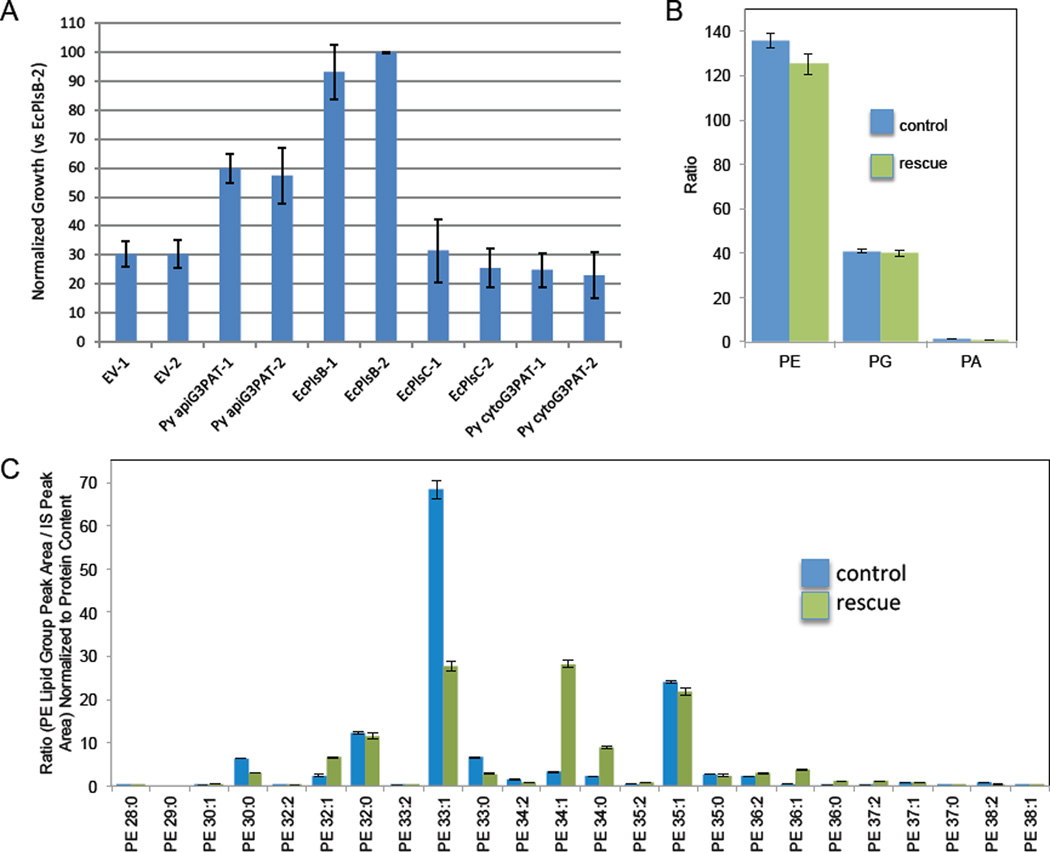Figure 3.
The predicted apicoplast-targeted glycerol 3-phosphate acyltransferase (apiG3PAT) functionally rescues the G3PAT-deficient Escherichia coli strain BB26-36. (A) BB26-36 was transformed with plasmids that express an empty vector (EV), P. yoelii apiG3PAT (Py apiG3PAT), the native E. coli G3PAT, PlsB (EcPlsB), the native E. coli lysophosphatidic acid acyltransferase (LPAAT), PlsC (EcPlsC), or the extraplastidial P. yoelii G3PAT (Py cytoG3PAT). Independent clones were grown in triplicate and growth was determined spectrophotometrically. Values were normalized to the amount of growth of EcPlsB clone 2 (EcPlsB-2). Error bars represent the standard deviation across three technical replicates. Results show that only Py apiG3PAT and E. coli PlsB rescue G3PAT deficiency. (B) Mass spectrometric analysis of the phosphatidyl ethanolamine (PE), phosphatidyl glycerol (PG) and phosphatidic acid (PA) content from three technical replicates of BB26-36 transformed with empty vector and grown in minimal media with glycerol (control) and Py apiG3PAT-rescued BB26-36 grown in minimal media (rescue). The ratio is based on the summed phospholipid species peak area in relation to the internal standard peak area, normalized to protein content. Error bars represent the mean ± SEM (from three independent culture replicates). The results show that control and rescued bacteria have similar phospholipid content. (C) PE species were compared between the control and rescue cells. Carbon chain lengths analyzed ranged from C28:0 through C38:1. Lipid quantity is displayed as a ratio (phospholipid species peak area / internal standard peak area) normalized to protein content. Error bars represent the mean ± SEM (three independent culture replicates). When comparing the control with the rescue, the most striking difference was the decrease of the most common control species, C33:1 coupled with a substantial increase in C34:1, in the rescue.

